In order to start observing the night sky, you should first of all acquire the right equipment. Which telescope will be the best? What should you pay attention to when looking for a telescope, and what should you know about telescopes themselves? Read our guide and find out.
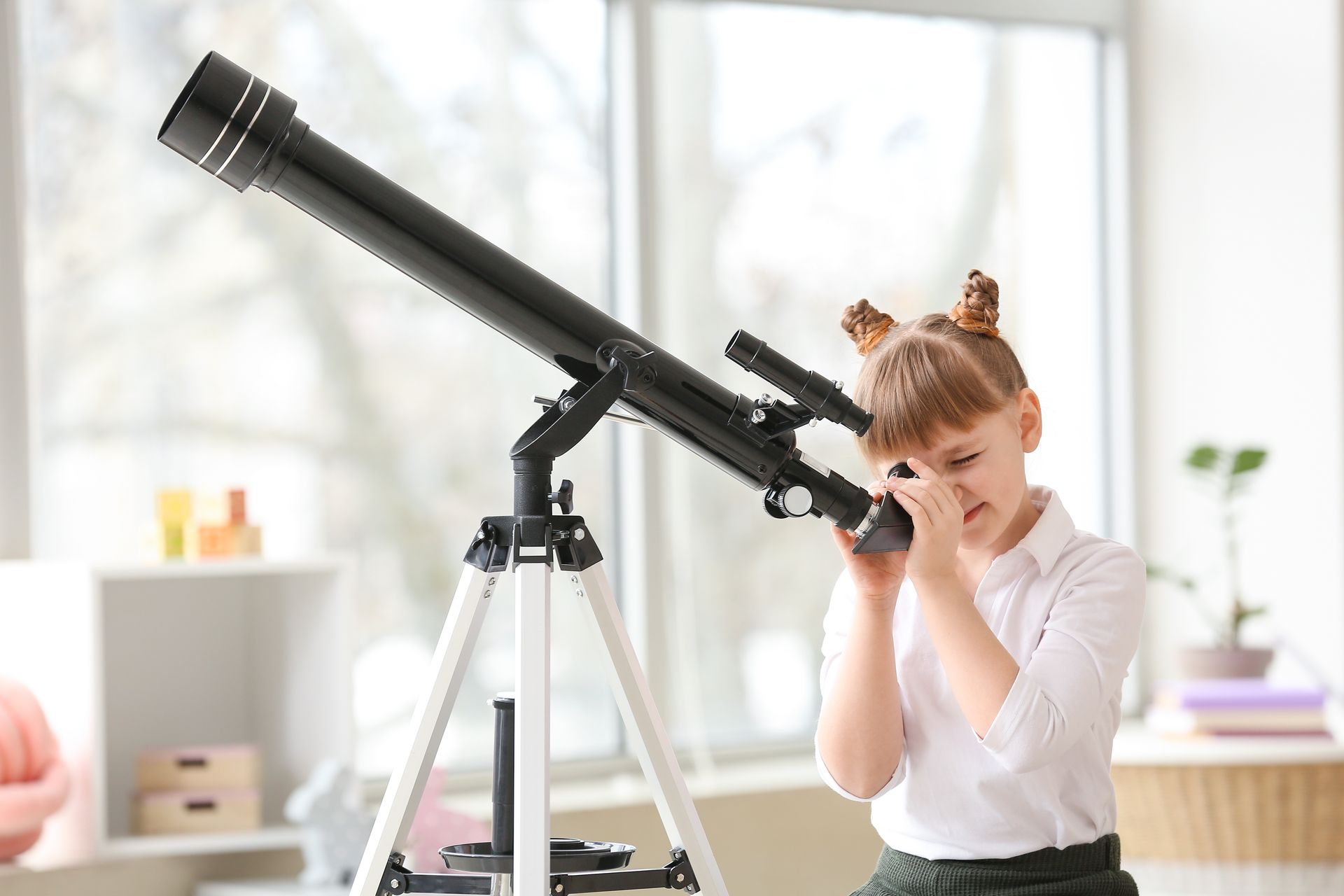
In order to start observing the night sky, you should first of all acquire the right equipment. Which telescope will be the best? What should you pay attention to when looking for a telescope, and what should you know about telescopes themselves? Read our guide and find out.
Types of telescope
Let’s start with the types of telescope, among which there are two basic groups – reflectors and refractors. They differ in terms of both their construction and method of use, so you should gain such basic knowledge before deciding which telescope to choose.
The third group, catadioptric telescopes, combine the features of refractors and reflectors.
Refractors
Refractors use a system of lenses, including a focusing lens, changing the direction of the light passing through it, focusing it into a concentrated beam and sending it to the main lens. Their operation and construction are nearly identical to those of a spotting scope. They are even shaped like a tube.
Advantages of refractors include their resolution, as well as high contrast and clear image. Disadvantages are the weight of larger telescopes (which results from the fact that they are equipped with heavier lenses), as well as the chromatic and spherical aberrations (the former involve the diffraction of light and distort the image, while the latter cause the light to focus in more than one point). Both chromatic and spherical aberrations can be corrected using achromatic, apochromatic or aspheric lenses.
Reflectors
Another type of telescopes are reflectors. The two most popular ones are the Cassegrain and Newton telescope. In the case of the Newtonian telescope, there is a spherical or parabolic mirror at the lower end that captures the light that is emitted by celestial objects at the end of the telescope .
The Cassegrain telescope has a convex mirror and an eyepiece located at the back (as in the case of refractors). The mirror in the lens of this type of telescope will have a hole in its centre. Cassegrain telescopes offer reduced image brightness, making them ideal for observing the Sun or Moon.
Newtonian reflector telescopes are much simpler in terms of construction than Cassegrain ones, although they are also larger. The features of these telescopes make it possible to achieve bright images, making them perfect for observing dark objects.
However, you should also bear in mind the disadvantages of reflecting telescopes. The biggest disadvantage is the coma, a form of spherical aberration. Under its influence, the observed object is seen as an outline of the letter V or a comma. This disadvantage can be eliminated with spherical lenses.
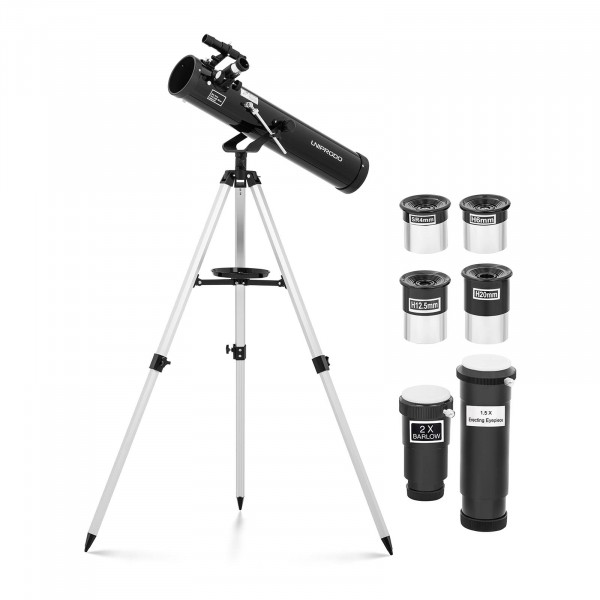 Telescope – Ø 76 mm – 700 mm – tripod |  Telescope – Ø 76 mm – 900 mm – tripod | 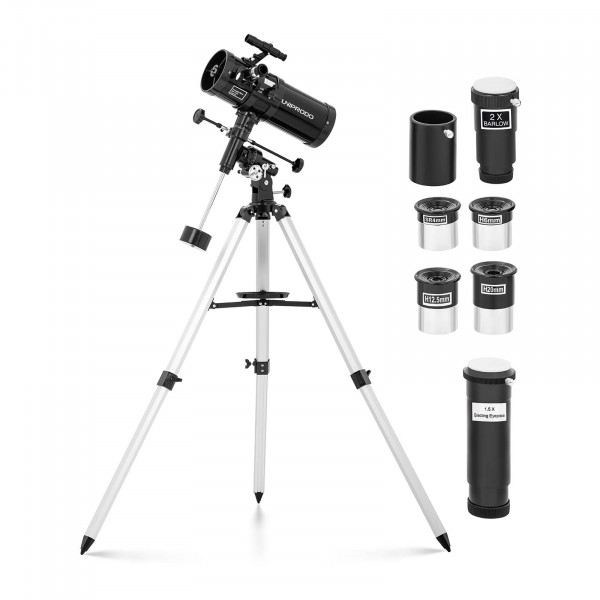 Telescope – Ø 114 mm – 1,000 mm – tripod | |
| Telescope | 5×24 | 5×24 | 5x 4 |
| Focal length | 700 mm | 900 mm | 1000 mm |
| Telescope type | Newton reflector | Newton reflector | Newton reflector |
| Diameter, lens | 76 mm | 76 mm | 114 mm |
| Aperture ratio (f/) | 76 mm | 76 mm | 114 mm |
| Resolution | 9 | 12,8 | 4,4 |
| Light gathering capacity | 60 | 76 | 114 |
| Maximum magnification | 120 | 152 | 228 |
| Height-adjustable tripod | 755-1190 mm | 770-1300 mm | 900 – 1390 mm |
Catadioptric
Catadioptric telescopes have both lenses and mirrors. As a result, the path the light has to travel inside the tube and during which it is corrected is shortened. The image is therefore devoid of any aberrations, including the coma, while maintaining a large field of view.
Catadioptric telescopes are known for their multipurpose features and functionality, which comes from their construction, consisting of both mirrors and lenses. The use of these two types of optical planes is the latest technique in telescope construction. This also influences the price – catadioptric telescopes are more expensive than the previous two types.
What should you pay attention to when choosing a telescope?
If you are wondering which telescope is the best one for you, consider a few very important aspects before making your choice. The specific size or design of a telescope are not the only features worth paying attention to. You will also find models intended for specific purposes. The telescope you choose should therefore be well adapted to your preferences.
You should start off by defining who will be using the telescope – both the age and level of experience are important. Telescopes for children are different than those for adults, and models for beginners should be much more intuitive to use, but providing a high image quality. Experienced users will prefer telescopes with a more complex optical design.
You should also have clear goals as for what you want to observe. In addition to watching stars in the night, you may also want to look at terrestrial landscapes. This is all the more important since equipment intended for such purposes has a different design, with different functionality and parameters. For the same reason, it is also important to decide whether you want to watch the Moon or the Sun.
Telescope – Ø 60 mm – 900 mm – tripod
- Visibility – 60 mm aperture, 900 mm focal length and f/15 light intensity
- Versatility – universal refractor lens
- Convenient – diagonal mirror angle: 90°
- Accessories – standard eyepieces Ø1.25
- Stability – aluminium tripod with a rod for slow and very accurate vertical adjustment of the telescope
Another aspect is where you will be using the telescope. Refractors will be best for use in urban areas, where there are lots of lights, as they offer the greatest image contrast. A good quality telescope of this type, with an objective diameter of 100 mm, will allow you to observe the Moon with ease. A telescope that will be used away from built-up areas should meet very different requirements.
With all the above issues in mind, let’s move on to the last type. Here it’s all about mobility. Larger, heavier models will not be good for younger users, and will also be troublesome if you intend to move it frequently, changing your observation site or using it outdoors.
Which parameters are the most important?
Before deciding which telescope to buy, you should know the basic parameters of such equipment. There are exactly six that you should know, and based on this knowledge you can determine the functionality of a given model, and thus whether or not it will meet your requirements.
The first two parameters are the diameter and the focal length of the lens/mirror. The larger the diameter, the clearer and brighter the image during observation. This is because the larger the diameter, the more light it picks up. The focal length parameter indicates the distance from the lens or mirror to the image focus point, so it also influences the length of the telescope.
Other parameters are the focal length of the eyepiece and the diameter of the focuser. The user looks through the eyepiece (the image can be directed through a mirror or a lens). The eyepiece focal length parameter is responsible for image magnification and the viewing area. The smaller the focal length, the closer and narrower the image you can see. As for the diameter of the focuser, this is important when it comes to replacing eyepieces or other accessories.
The fifth parameter is magnification. Its value is the ratio of the focal length of the lens and eyepiece, and up to twice the diameter is considered appropriate. Too high magnification will result in poor image quality and a too bright image.
The last parameter that you should know about before deciding which telescope to buy is the finderscope. This small auxiliary telescope has a smaller magnification than the main telescope, useful for locating a desired astronomical object This makes using a telescope much easier, so it is best to choose a model that includes a finderscope. As for the magnification, finderscopes can have up to 12x.
Which telescope should you choose – summary
Before choosing a telescope, you should take into account several basic aspects related not only to the type and parameters, but also who will use it, as well as where and what for. In this case, both the size and weight, as well as the possibility to use it under certain conditions (e.g. intense external lighting), are important.
Simpler models are generally better for beginners. However, even they should pay attention to the basic parameters.

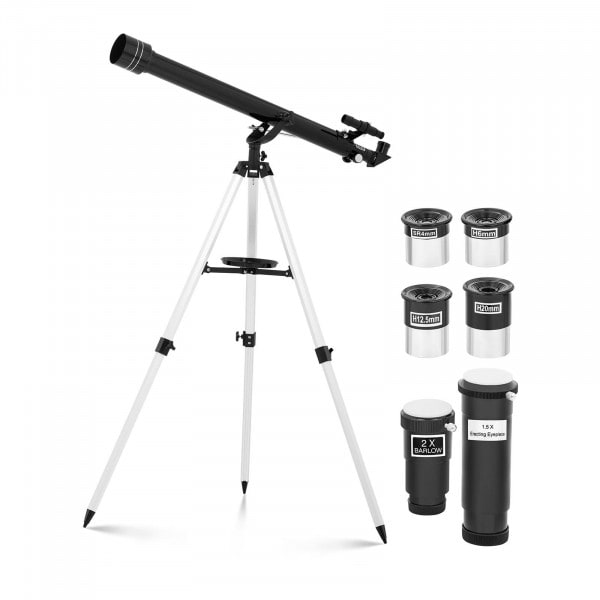
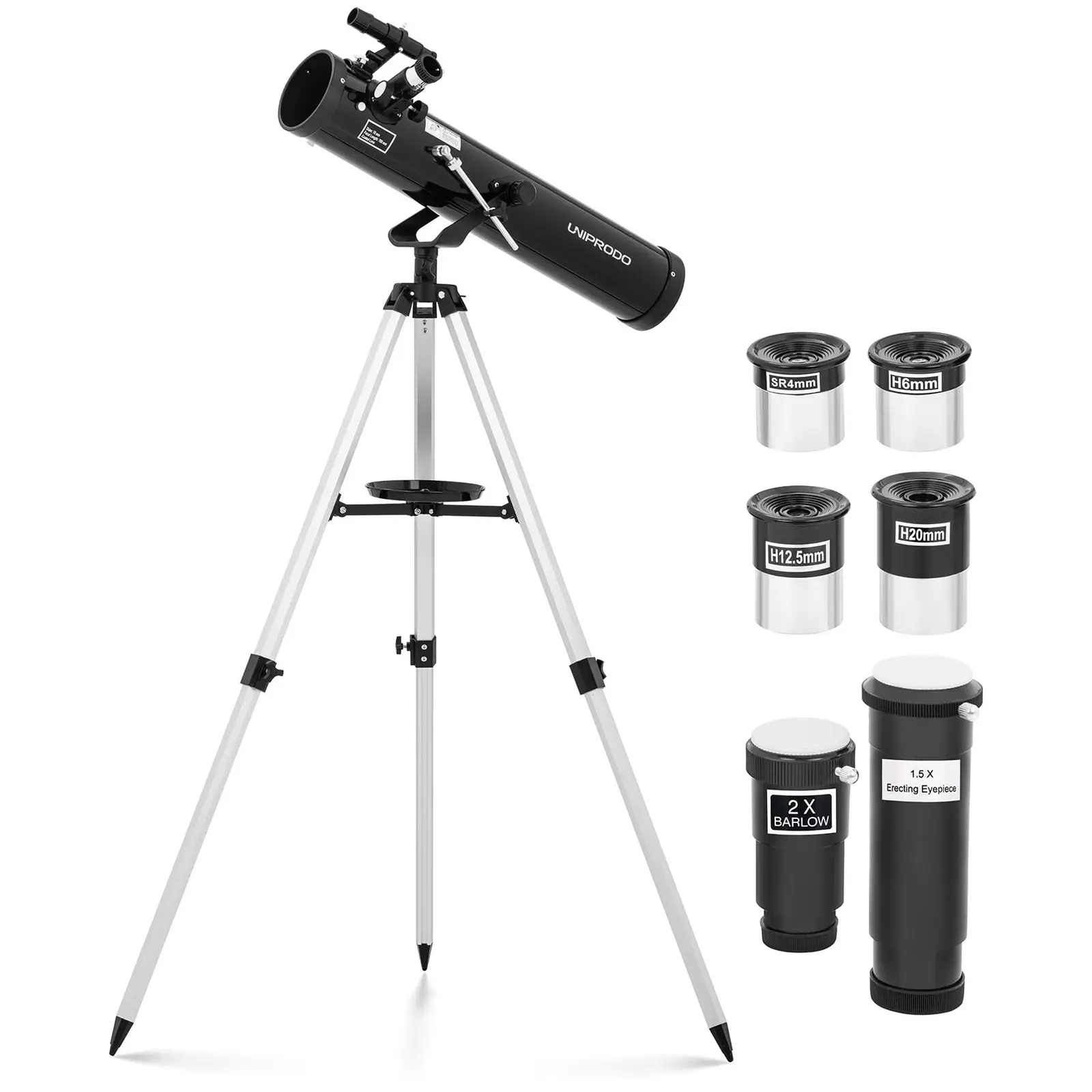
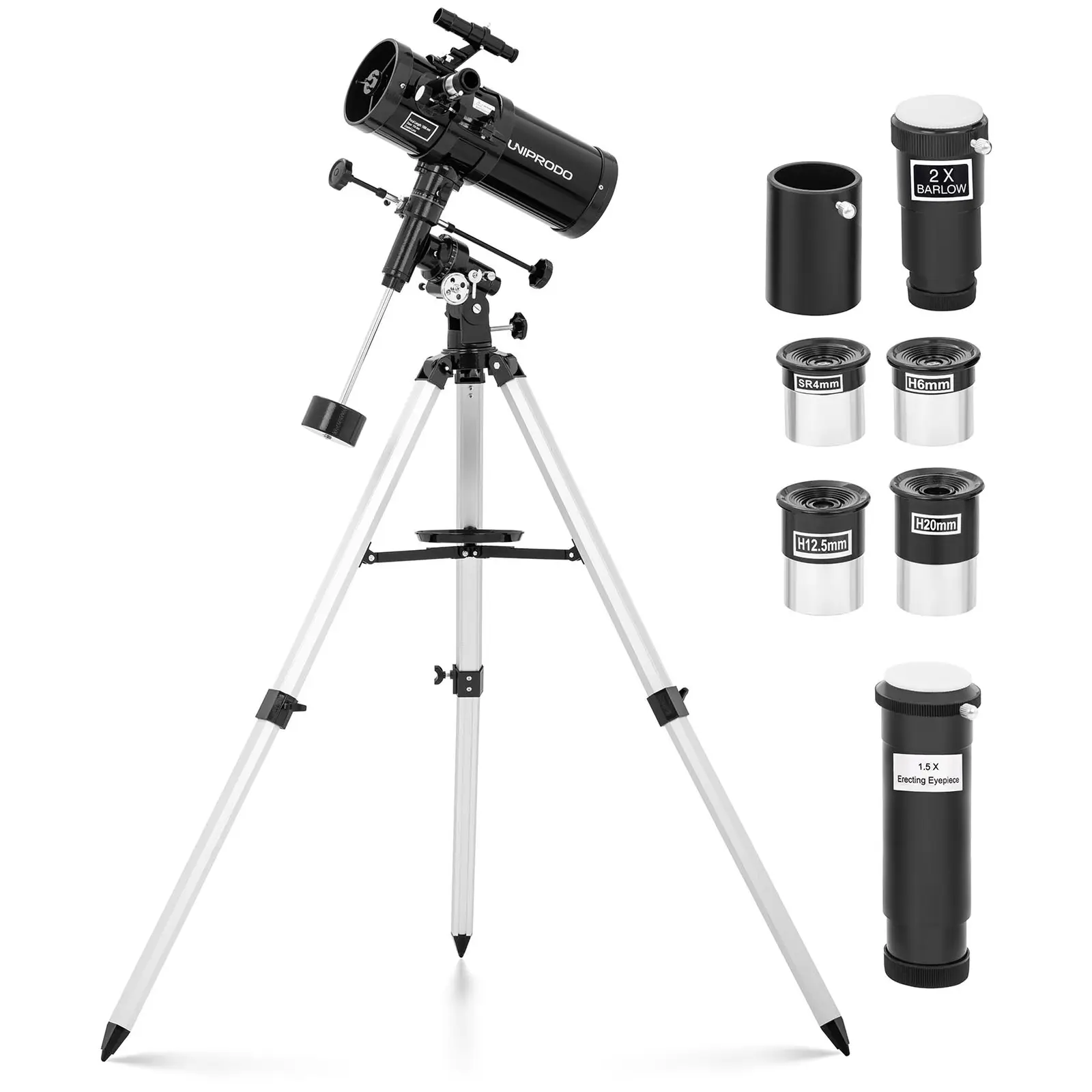
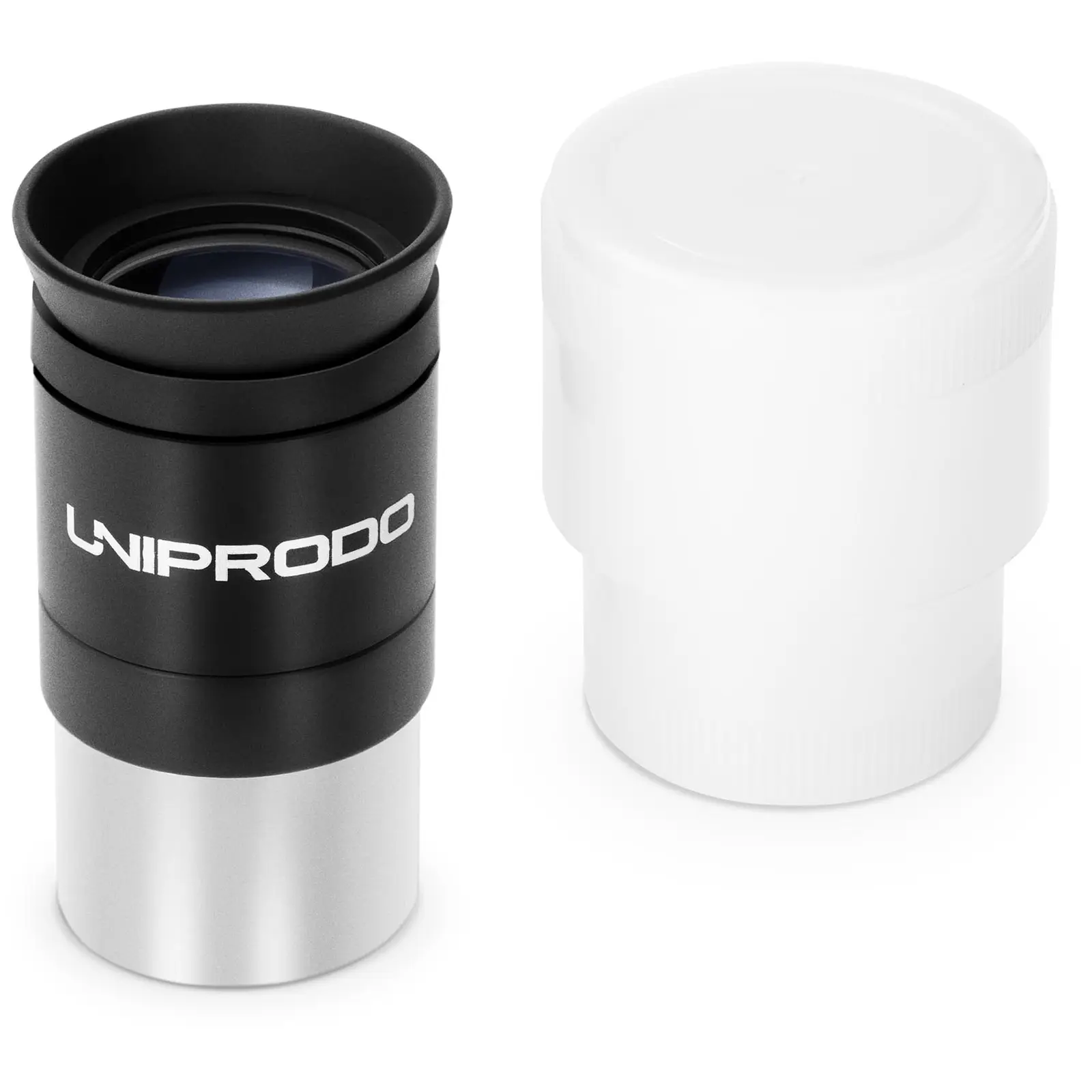






Share